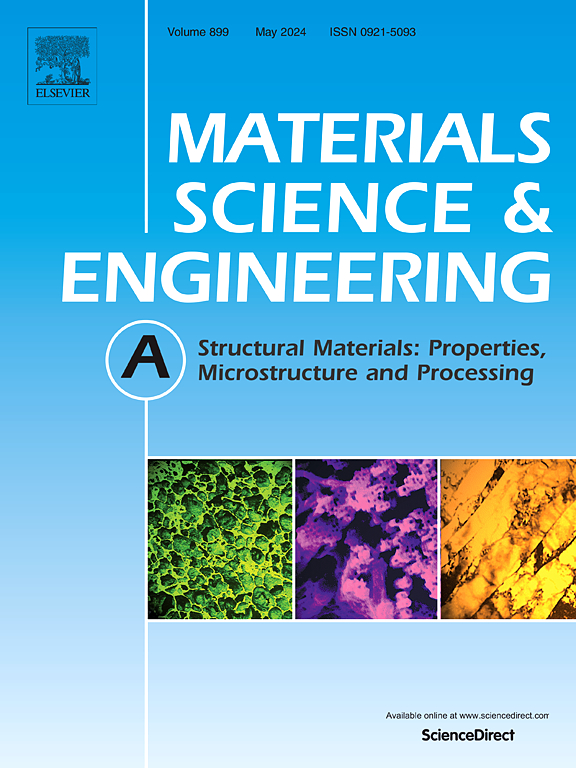Double yielding mechanisms in Ti48Zr30Ni6Ta1Al1Be14 metallic glass matrix composites
IF 7
2区 材料科学
Q1 MATERIALS SCIENCE, MULTIDISCIPLINARY
引用次数: 0
Abstract
Ti-based metallic glass matrix composites (MGMCs) are composed of amorphous phase, β phase and α phase at room temperature. The stress-strain curve of the MGMCs exhibits a “double yield” phenomenon at room temperature, which disappears at low temperatures. The tensile deformation mechanism of the MGMC is deformation-induced martensitic transformation at 298 K and deformation twins at 77 K. The phase transformation starts from the dendrite boundaries, which will hinder the dislocation movement and further enhance the work hardening capability at room temperature. The stability of dendrites was evaluated by martensite trigger stress and critical α lath length, which provided guidance for exploring the deformation mechanism of amorphous composites.
Ti48Zr30Ni6Ta1Al1Be14金属玻璃基复合材料的双重屈服机制
ti基金属玻璃基复合材料(MGMCs)在室温下由非晶相、β相和α相组成。MGMCs的应力应变曲线在室温下呈现“双屈服”现象,在低温下消失。MGMC的拉伸变形机制为298 K时变形诱发马氏体相变和77 K时变形孪晶。相变从枝晶边界开始,这将阻碍位错的移动,进一步增强室温下的加工硬化能力。用马氏体触发应力和临界α板条长度评价了枝晶的稳定性,为探讨非晶复合材料的变形机理提供了指导。
本文章由计算机程序翻译,如有差异,请以英文原文为准。
求助全文
约1分钟内获得全文
求助全文
来源期刊

Materials Science and Engineering: A
工程技术-材料科学:综合
CiteScore
11.50
自引率
15.60%
发文量
1811
审稿时长
31 days
期刊介绍:
Materials Science and Engineering A provides an international medium for the publication of theoretical and experimental studies related to the load-bearing capacity of materials as influenced by their basic properties, processing history, microstructure and operating environment. Appropriate submissions to Materials Science and Engineering A should include scientific and/or engineering factors which affect the microstructure - strength relationships of materials and report the changes to mechanical behavior.
 求助内容:
求助内容: 应助结果提醒方式:
应助结果提醒方式:


